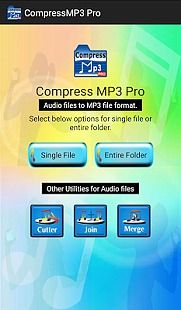

#Recompress audio to 192 kbs professional#
Moreover, if you want to send your song to a professional audio engineer for mixing or mastering, they will not even accept MP3 files. If you add processing to an already processed track, you will not be able to achieve the same results. In music production, we want to work with good quality raw recordings, so we can apply our own processing to them later. In other words, they already sound processed. MP3 files already have compression applied to them, which creates a number of issues they have less dynamic range, high frequencies, detail and they often distort. Lossless formats ensure that we are working with high-quality raw tracks from the beginning that accurately represent the original signal. In music production, we aim to utilise high-quality audio formats, so we can achieve the best sounding result. In professional music production, we generally utilise lossless file formats, such as WAV or AIFF due to their superior audio quality. It is not recommended to use MP3 files in your productions since it is a lossy format. Which MP3 Bit Rate is The Best To Use for Listening? On the other hand, if you're listening to music through high-quality studio monitors or studio headphones, the difference will be very noticeable. It is important to add that whether or not you can hear the difference between the different bit rates can also highly depend on the listening environment and the medium that you're using to listen to the audio.įor example, if you're listening to music with low-budget earphones or through the speakers of your phone, you will most likely not be able to notice a major difference, as these mediums tend to have very poor sound quality. Having said that, there are certain streaming platforms like Tidal, which offer subscription plans that allow the listener to stream music at higher bitrates, such as 1411 kbits/s or even 9217 kbit/s. The general audience is not used to listening to high-resolution audio, as these days, the majority of people tend to consume music on streaming services like Spotify, which stream music at a lower bit rate, between 24 and 320 kbits/s. It goes without saying that those who have more advanced listening skills and regularly listen to high-fidelity audio, such as audio engineers and audiophiles, will notice the differences easier. It is important not to confuse kilobit per second with kilobyte per second (KBps)! Can You Tell The Difference Between 64, 128, 192, 256 & 320kbps? For audio, we use kilobit per second (kbit/s or kbps). This can be converted into different formats, such as Mbit/s (megabit per second) or Gbit/s (gigabit per second). The unit of measurement that we use for bit rate is bit per second (bit/s or bps). For this reason, the MP3 format played a significant role in the rise of music piracy.Īs you might have already guessed, lossless audio files have higher bit rates, while lossy files have lower bit rates since they store fewer data per second. This makes them ideal for file sharing or streaming purposes. On the other hand, lossy formats, such as MP3, are heavily compressed, therefore they lose a significant amount of data during the encoding process, which leads to sound quality degradation.Ī major advantage of lossy formats however is that they require significantly less storage space than lossless formats, for example, uncompressed WAV files. In addition, there are lossless file formats such as FLAC, that are compressed, however, this is done in a way that does not lead to any data loss. Lossless file formats, such as WAV are uncompressed, meaning they do not lose any data during the encoding process, therefore they provide exceptional sound quality since they can accurately replicate all the tonal characteristics of the recorded sound. The main difference between these is the quality and the file size

In digital audio, there are two major audio format types: More data means more detail, therefore, a higher bit rate provides better sound or image quality. In multimedia, the bit rate is used to determine how much data is encoded in one second of a digital medium, such as audio or video. In telecommunication, for example in file-sharing or streaming, the bit rate conveys the speed of the data transfer. Audio files with higher bit rates contain more data, therefore they have better sound quality.īit rate is a term that gets used in both computing and telecommunication. In digital audio, bit rate refers to the amount of data, more specifically, the number of bits encoded in an audio file in a single second.


 0 kommentar(er)
0 kommentar(er)
